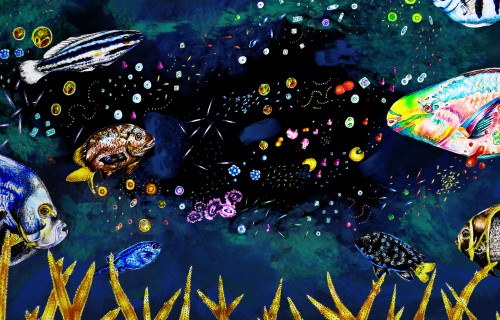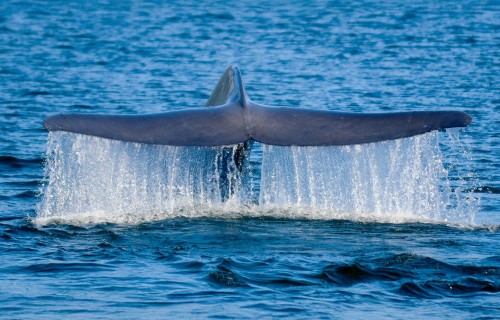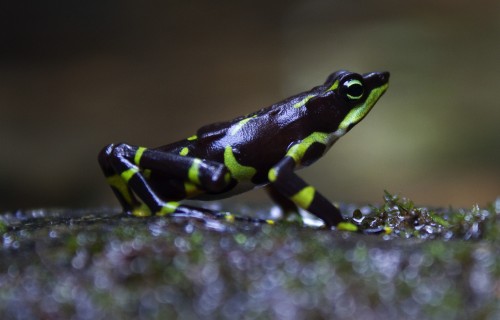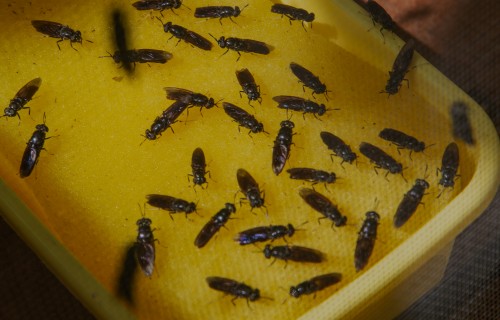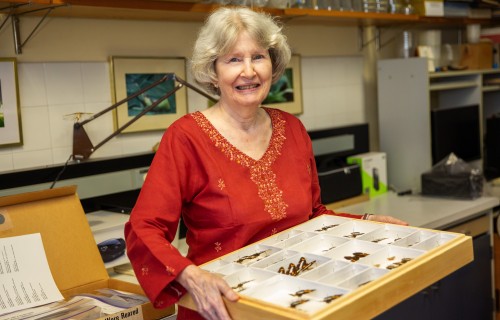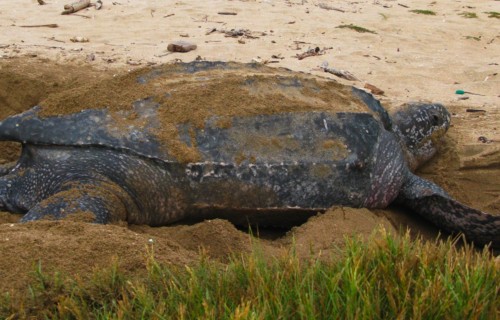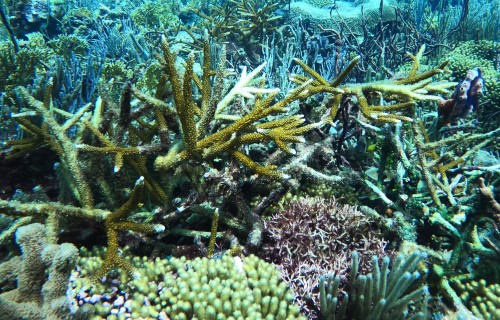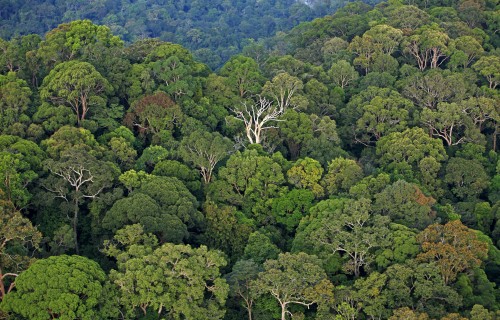Above the tropical forest canopy,
sensors capture the fluxes of gases
between the trees and the atmosphere
Bird
disappearances
Biodiversity loss despite
a century of protection
Text by Leila Nilipour
The Barro Colorado bird community has lost about a quarter of its species over time
Over a century ago, Barro Colorado Island (BCI) was formed following the construction of the Panama Canal and the filling of Gatun Lake. Since then, this 15-square-kilometer island has been protected from human disturbance. However, despite being a large, unaltered piece of forest for more than 100 years, many of its bird species have disappeared. A research team that included W. Douglas Robinson, a visiting scientist at the Smithsonian Tropical Research Institute (STRI), explored the reasons why.
“Uniquely, the BCI bird community has been documented by ornithologists for 90 years,” said Robinson. “Back when the surveys started, in the early 20th century, about 228 bird species could be found in the island.”
Nevertheless, BCI was never a regular island: it was a hilltop forest fragment that had become isolated by the creation of an artificial lake. This presented a few advantages for the conservation of biodiversity, such as resistance to exotic invaders and protection from human disturbance.
Bird species associated with wet and humid forests were particularly affected after Barro Colorado island was isolated from the mainland forests. Credit: Randall Moore.
On the other hand, after becoming isolated from the mainland forest, some BCI birds began experiencing new challenges. Particularly bird species associated with wet and humid forests. Even though rainfall patterns have remained relatively stable, the island doesn’t have permanent streams or water sources and it is exposed to winds sweeping across Gatun Lake, which contribute to even more moisture loss.
Over time, the BCI bird community has lost about a quarter of its species. Most of them had similar traits: they were sensitive to moisture conditions, not very abundant to begin with, or had very particular diets. For instance, many insect-eating birds were lost, which could be in part due to insects being less active and harder to hunt in drier environments. Many terrestrial birds also disappeared: even when abundant in adjacent mainland forests, given their reluctance to fly, they weren’t able to disperse across the lake and maintain populations on the island.
According to the authors, who described their findings in Scientific Reports, rainfall patterns are also shifting, with more frequent extreme dry periods across the region. In the past, these dry periods may have led to increased bird extinction rates.
This combination of factors has slowly transformed the BCI bird community into one resembling that of drier, disturbed forests in the region. Twelve additional species with traits similar to missing birds continue to decline and may also be lost in the next two decades.
Many terrestrial birds disappeared, despite their abundance in adjacent mainland forests, because they could not cross Gatun Lake to maintain populations on the island. Credit: Ghislain Rompre.
“The idea that simply protecting remnant forest patches will preserve their diversity over the long-term is increasingly unsupported,” said Jenna Curtis, from Oregon State University (OSU) and co-author of the study. “Our results, as well as recent findings of bird declines in undisturbed Amazonian forests, show that species losses continue long after a fragment is first established. Our observations of ongoing species losses from BCI show how species traits and habitat effects interact to slowly erode biodiversity. We expect bird declines will continue on BCI for years to come, which is why continued monitoring is so essential.”
“I think the BCI story shows the importance of connecting protected areas in the tropics if long-term preservation of biodiversity is a goal society values,” said Robinson. “Even as large as BCI is, when conditions change too much and some species disappear, they do not return unless they are great fliers. Species with poor abilities to move across fragmented landscapes need the connectivity to maintain resilient populations in the face of a dynamic climate. That’s why projects like the Mesoamerican corridor, connecting forests the length of Central America, are so important.”
Curtis, J.R., Robinson, W.D., Rompré, G. et al. Erosion of tropical bird diversity over a century is influenced by abundance, diet and subtle climatic tolerances. Sci Rep 11, 10045 (2021). https://doi.org/10.1038/s41598-021-89496-7




